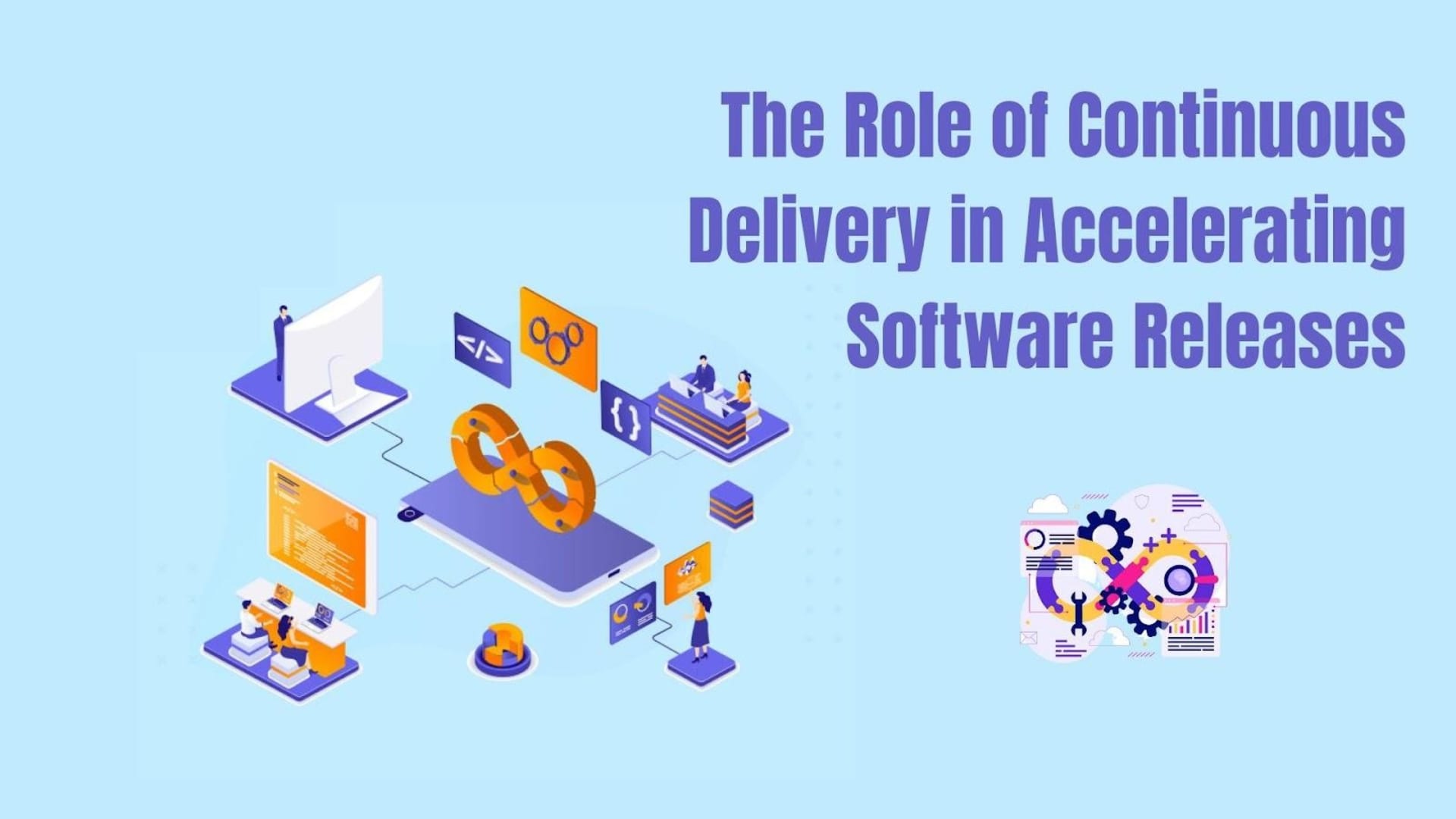According to the 2021 State of DevOps Report, elite performers have a change lead time of 15 minutes, while low performers have a change lead time of 12 days. This shows that elite performers are able to deliver software faster with less risk, making it more reliable than low performers. By adopting DevOps practices, organizations can improve their software delivery performance and achieve significant benefits.
CD is a software development approach focusing on frequent automated software releases. A continuous delivery pipeline involves integrating code changes into a shared repository and running automated tests and quality assurance. The ultimate goal is to deliver software into the production environment quickly and reliably.
The importance of faster software releases lies in the ever-increasing demands of the users and market. In today’s fast-paced digital landscape, businesses need to deliver new features and bug fixes at a rapid pace to stay competitive. Slow-release cycles can result in missed opportunities and frustrated customers. Organizations can accelerate software releases and respond promptly to any change in market needs by adopting CD practices.
What is Continuous Delivery?
Continuous delivery is a software development approach that focuses on automated tests that are more frequent. Software developers integrate code changes into a shared repository. Automated tests and quality checks are done to ensure the software is stable and all the functionality is working as expected.
Continuous Integration
Continuous integration is a development practice where developers regularly integrate code changes into a central repository. This practice ensures that development teams‘ changes are merged and tested together. Thus reducing integration issues beforehand instead of integrating the code of every developer when they are done with their part.
Continuous Deployment
Continuous deployment is a development practice where as soon as the code changes pass all the automated tests and quality checks in the CD pipeline they are automatically deployed to production. This automation eliminates the need for manual deployment therefore it reduces the time and effort required to release new features or bug fixes.
The main difference between continuous delivery and continuous deployment lies in decision-making. The decision to deploy a release to production is typically made manually in continuous delivery, whereas continuous deployment takes the decision-making process out of the equation.
Why Use Continuous Delivery for Faster Software Development?
This section explores the key benefits of continuous delivery in accelerating software releases. Let’s look at the benefits.
#1 Improved Code Quality
Continuous delivery improves code quality through automated testing and code reviews. By automating various types of tests CD ensures that code changes are validated for functionality, performance, and security. The CD also encourages regular code reviews where team members provide feedback on the changes and help identify issues.
CD also often incorporates static code analysis tools that analyze code without executing it. These tools can identify potential vulnerabilities and deviations from coding conventions. Static code analysis helps catch common coding mistakes, enforce coding standards, and improve overall code quality by automatically scanning the codebase.
#2 Faster Time to Market
Continuous delivery reduces time to market by enabling shorter release cycles. With CD, the code base is more likely to be error-prone, and organizations can deliver new features and bug fixes to users more quickly. CD eliminates manual and time-consuming tasks that can cause delays. This streamlined process allows for rapid user feedback and faster identification and resolution of any issues. The importance of shorter release cycles lies in delivering updates and improvements more frequently to keep the software competitive and aligned with customer needs.
Shorter release cycles facilitate the gathering of feedback and insights from end-users more promptly. With each release, organizations can collect valuable feedback and usage data, enabling them to make informed decisions for future development cycles. This feedback loop helps organizations refine their product, enhance user experience, and prioritize features based on user needs and preferences.
#3 Reduced Risk and Easier Error Detection
CD reduces the risk of deployment failures by promoting automation. By automating the release process, CD ensures that code changes undergo comprehensive continuous testing, validation, and quality checks before deployment. This minimizes the chances of introducing critical bugs or compatibility issues into the production environment. The CD also facilitates easier error detection and rollback. If an error occurs in production, CD allows organizations to quickly identify the problem and revert to a previous software version to minimize downtime and mitigate user impact.
#4 Increased Customer Satisfaction
Faster software releases through CD lead to increased customer satisfaction. By delivering new features and enhancements more quickly organizations can provide a better user experience and meet customer expectations in a timely manner.
CD enables organizations to respond swiftly to customer feedback and promptly address concerns by incorporating their suggestions. This responsiveness enhances customer satisfaction by demonstrating that their needs are valued and prioritized. The CD also allows organizations to keep up with evolving market demands to ensure their software remains competitive and aligned with industry trends. The ability to deliver updates quickly and adapt to customer feedback and market demands fosters a positive relationship with customers and drives higher satisfaction levels.
Best Practices for Implementing Continuous Delivery
Implementing CD requires careful planning and execution to ensure its effectiveness in accelerating software releases and improving code quality. This section outlines key guidelines and best practices for successfully implementing CD in a software development process. By following these recommendations, organizations can optimize their CD pipelines with low risk and reap the benefits of faster and more reliable releases.
#1 Automate Testing and Deployment
Test automation is crucial in CD as it helps streamline the software development and delivery process to a faster and more reliable release. Automated deployment ensures consistent and reliable releases without relying on manual steps thus reducing the chances of configuration errors or inconsistencies. Automation also enables faster execution of tasks, resulting in shorter feedback loops and accelerated release cycles.
#2 Monitor and Optimize Software Delivery via the CD Pipeline
Monitoring and optimization play a vital role in continuous delivery by ensuring the efficiency of the software delivery process. By monitoring the pipeline, organizations can identify bottlenecks and performance issues. Monitoring helps detect anomalies, such as increased build or deployment times, test failures, or resource utilization spikes.
Metrics and analytics play a crucial role in optimizing the CD pipeline. Organizations collect and analyze various metrics to gain insights into the performance and efficiency of the CD process. Key metrics may include build times, test coverage, error rates, and lead time. Analytics helps to identify patterns and areas for improvement based on the collected data. By leveraging metrics and analytics organizations can make data-driven decisions to optimize the CD pipeline.
#3 Encourage a Culture of Collaboration and Continuous Improvement
Collaboration between development and operations teams is paramount in successful Continuous Delivery (CD) implementation. This collaboration breaks down silos and promotes shared ownership of the software delivery process. Development teams focus on creating and enhancing the software while operations teams are responsible for deploying and maintaining it. Both teams collaborate closely to understand better the system requirements and operational considerations.
This alignment allows for better coordination and problem-solving within the team. Development teams can gain insights into deployment challenges and infrastructure dependencies. While operations teams can provide valuable input on security and performance considerations.
Continuous Delivery Release Speed Gains
Continuous delivery is vital for accelerating software releases and reaping numerous benefits for organizations. By embracing CD, organizations can reduce time to market and mitigate risks. CD enables faster software development cycles by allowing organizations to deliver new features and bug fixes more frequently. Thus giving them a competitive edge in the market.
In a rapidly evolving digital landscape, where speed and quality are paramount implementing CD is necessary. By adopting CD practices organizations can stay ahead of the competition by delivering value to their customers faster and continuously improve their software products based on their feedbacks.
Embracing CD is a journey that requires commitment and effort, but the rewards in terms of accelerated software releases and enhanced business outcomes are well worth it. Therefore development teams and organizations should embark on the CD journey and unlock the potential of faster software development, improved code quality, and increased customer satisfaction.
If you enjoyed this, be sure to check out our other DevOps articles.
- Continuous Delivery Best Practices for Successful Projects
- Mastering Continuous Integration For DevOps: A Comprehensive Guide
- DevOps Culture: How to create the Value Factory
- DevOps Future: Change in the Next 5 Years
- Hire Ansible Developers
FAQs
How can organizations ensure the security of their software releases when using continuous delivery?
Organizations can ensure the security of their software releases in continuous delivery by incorporating security practices (DevSecOps) throughout the development pipeline by including automated security and vulnerability testing with regular security audits.
What are the potential challenges in implementing continuous delivery?
Some potential challenges in implementing continuous delivery include resistance to change and complex legacy systems along with a lack of automation infrastructure needed for skilled resources to manage the CD pipeline effectively.
How does continuous delivery contribute to the success of DevOps practices?
Continuous delivery is a fundamental aspect of DevOps practices as it promotes automation and continuous improvement. It enables seamless integration between development and operations teams which facilitates faster and more reliable software deployments to foster a culture of shared responsibility and continuous feedback.







